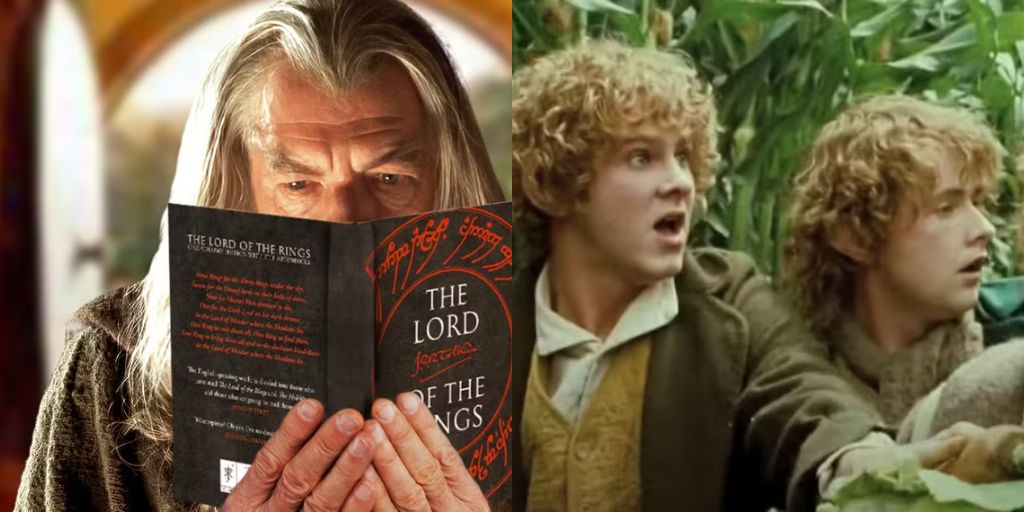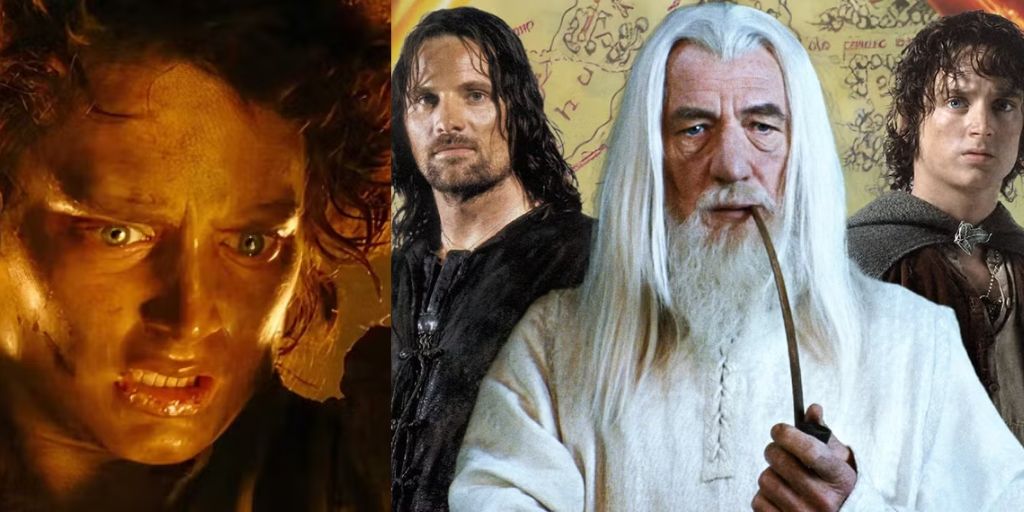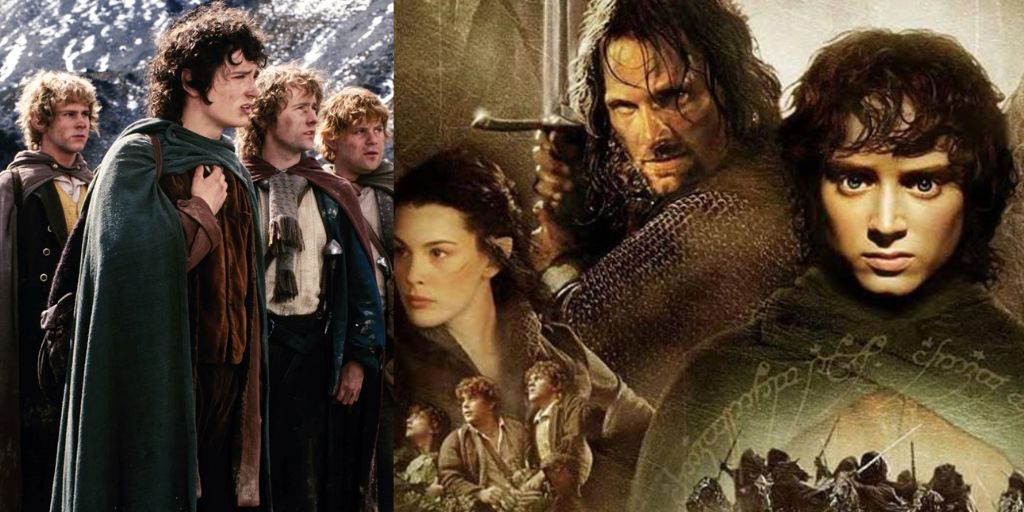“The Lord of the Rings” is an interesting story about Frodo (played by Elijah Wood) and his friends trying to defeat the dark lord Sauron.
Their mission is to destroy the One Ring, a magical item that holds the power to rule all other rings. Even though the story’s title suggests that there’s just one ring, Middle-earth has a total of nineteen other magical rings.
These were spread out across various groups in Middle-earth, with three rings going to the Elves, seven to the Dwarves, and nine to the leaders of Men.
The story begins with a prologue narrated by Galadriel (played by Cate Blanchett). She introduces these rings, explaining that each ring holds the “strength and will to govern” the race that owns it.
The One Ring, however, has power over all the others, which makes it especially significant. This powerful ring is central to J.R.R. Tolkien’s novels and the film trilogy.
Even though the opening scene brings up the nineteen other rings, they receive little attention in the story afterward.
The focus on the One Ring instead of the other nineteen rings is because the One Ring must be destroyed in a specific and challenging way.
However, the other rings still exist and are part of Middle-earth’s complex history. By the time the events in “The Lord of the Rings” begin, the rings have been around for thousands of years.
They were forged in the Second Age of Middle-earth, while the events of the books, known as the War of the Ring, occur at the end of the Third Age. During that long time, the rings passed between many different characters.
The Elves’ Rings and Their Holders
The three rings of the Elves have a rich history. The prologue shows Galadriel and two other Elves receiving these rings. In Tolkien’s stories, the other two Elves are named Gil-galad and Círdan.
Galadriel continues to possess her ring, and while it isn’t directly stated, Gandalf (played by Ian McKellen) is shown with another ring.
The books reveal that Elrond (played by Hugo Weaving) holds the third. These rings stayed in the possession of these characters through the events of the story, playing an essential role in the Elves’ resilience against Sauron.

The Rings of Men and the Ringwraiths
The nine rings given to Men have a dark history. When Men received these rings, they gained great power, but it came with a curse.
These nine men eventually transformed into the Ringwraiths, who constantly chase Frodo and his friends throughout the story.
The Ringwraiths are bound to Sauron, and he regains control over their rings, using them to keep the Ringwraiths under his influence. The fate of these rings shows how Sauron’s power spreads by taking advantage of the weaknesses in Men.
The Seven Dwarven Rings and Their Legacy
The seven rings for the Dwarves have a different story. They were given to the leaders of the seven Dwarven clans: the Longbeards, Firebeards, Broadbeams, Ironfists, Stiffbeards, Blacklocks, and Stonefoots.
These rings were scattered across Middle-earth, carried by each Dwarven king. Only one of these Dwarven ring-holders is named—Durin III of Durin’s Folk.
Durin wore the Ring of Thrór, and this ring was passed down through his family line. Although these rings did not give the Dwarves the long lives of the Elves, they became powerful family symbols.
These rings also made the Dwarves more stubborn and protective of their treasures, eventually connecting them to some of Middle-earth’s wealthiest and most dangerous hoards.
Unlike Men, the Dwarves did not transform into servants of Sauron because of their rings. Instead, the rings affected them differently, increasing their desire for wealth and power. With their rings, the Dwarves gathered great riches, including the legendary Seven Hoards of treasure.
However, their increased greed and anger also attracted trouble. One of the most significant examples of this is the Dwarves of Khazad-dûm, who, while mining too deeply for treasure, woke a terrifying creature known as a balrog in the Mines of Moria.
Although the Dwarves did not intentionally harm others, their actions often benefited Sauron indirectly. By the time the events in “The Lord of the Rings” begin, these rings are no longer in the hands of the original owners or their descendants.
The Fate of the Seven Dwarven Rings
At the start of “The Lord of the Rings,” there are no longer seven Dwarven rings in existence. Over the thousands of years since they were made, some of the rings were destroyed.
During the battles and conflicts between Dwarves and dragons, four of the seven rings were lost, swallowed by dragons or destroyed in their fire.
This happened because dragons, like Smaug (voiced by Benedict Cumberbatch in “The Hobbit”), often invaded Dwarven homes, taking treasures and, in some cases, destroying the rings in the process.
Of the remaining three rings, none are with the Dwarves anymore. After regaining strength, Sauron managed to recapture these rings. Tolkien’s writings briefly mention what happened to these rings in Appendix A.
He tells readers that the last known Dwarven ring-wearer was Thráin II, a character fans might recognize as the father of Thorin Oakenshield (played by Richard Armitage in “The Hobbit”).
During his attempt to reclaim his home, Thráin II was captured by Sauron’s spies and imprisoned in Dol Guldur. Sauron took Thráin’s ring, the last Dwarven ring still in Dwarven hands, a few hundred years before the War of the Ring.

The Changes in Middle-earth’s Rings Over Time
The fates of the Dwarven rings are complex and diverse. Each ring had a unique path, some becoming symbols of wealth, others sources of tragedy, and a few lost forever to dragons or Sauron.
Although there is limited information about what happened to each ring, the history of these rings highlights how much Middle-earth has changed between their creation and the events of “The Lord of the Rings.”
These rings, meant to unite or control, ended up having mixed results—sometimes bringing wealth, other times tragedy, and in the end, returning to the dark lord they were meant to resist.
The rings in The Lord of the Rings carry both history and influence, representing power, greed, loyalty, and corruption. While the story focuses on the One Ring and the quest to destroy it, each of the nineteen other rings holds a legacy of its own.
Together, they embody the ways in which power shapes and transforms individuals and entire races. The One Ring’s influence is central because it controls the fate of Middle-earth, but the other rings still impact the storyline and character relationships in subtle yet profound ways.
The Elven rings, for instance, symbolize resilience and hope. Galadriel, Elrond, and Gandalf use these rings to protect and strengthen their people, resisting Sauron’s attempts to dominate them.
The Elves, with their long lives and wisdom, see their rings not as tools of control but as means of preservation.
Through these rings, Tolkien shows the role of wisdom and restraint when dealing with power. The Elven rings suggest that power can be used for good when handled responsibly, contrasting sharply with the way the rings given to Men affect them.
In the case of Men, the nine rings serve as a cautionary tale. Men, who are more vulnerable to ambition and corruption, fall under Sauron’s control, eventually becoming the Ringwraiths. These fallen kings highlight the dangers of unchecked power and ambition.
The nine rings not only rob them of their humanity but also bind them to Sauron’s will forever. Tolkien uses the rings of Men to reveal how the lust for power can consume individuals, turning even kings into servants of darkness.
The Dwarven rings, meanwhile, tell a story of ambition and wealth. Although the Dwarves do not become enslaved by their rings, they still experience the effects.
The rings amplify their natural desire for riches, leading to the creation of great treasures but also inviting disaster.
The fate of the Dwarven rings, lost to dragons and reclaimed by Sauron, reveals the cost of greed. These rings ultimately fail to bring lasting prosperity, instead luring the Dwarves into conflicts with powerful enemies.
In the end, the history of the nineteen rings reinforces Tolkien’s central themes about the nature of power. Power can corrupt or help, protect or destroy.
The varied fates of these rings illustrate how different races and individuals respond to power, reflecting their strengths, weaknesses, and vulnerabilities.
The One Ring’s destruction symbolizes a rejection of absolute control, hinting that true peace comes from letting go of power rather than seizing it.
The other rings, though often overshadowed, play an important role in deepening the domain of Middle-earth and highlighting the consequences of desiring and wielding power.
In The Lord of the Rings, each ring has its own story, revealing that the path to peace lies in humility, cooperation, and, ultimately, self-sacrifice.
Through this timeless tale, Tolkien reminds readers of the choices and values that define both heroes and villains, in Middle-earth and beyond.




